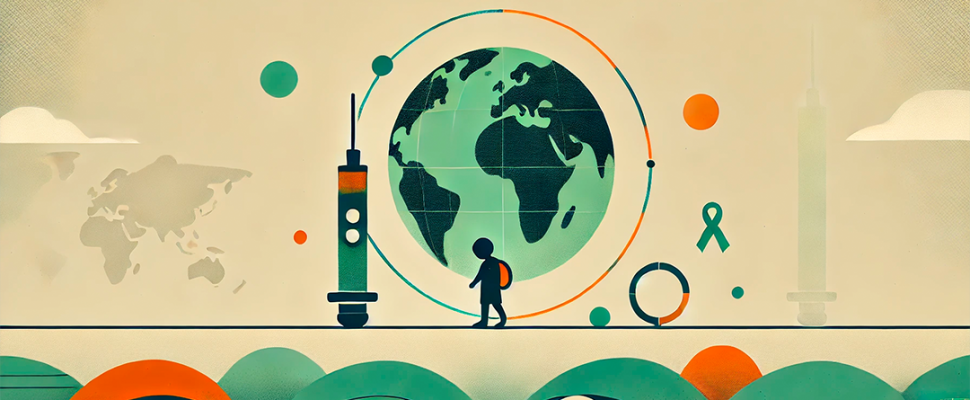Globally some 1.8 million children and young people (CYP) live with type 1 diabetes (T1D) and in low-and middle-income countries (LMICs) prevalence of the disease is on the rise. In many of these countries, health systems lack the resources to manage this complex chronic disease and the insulin used to treat it is often unavailable or prohibitively expensive. Pharma companies, including the world’s largest insulin manufacturers, have piloted a number of initiatives to address these challenges and have produced significant advances. However, as a new report from Access to Medicine Foundation reveals, access gaps remain and filling them presents a huge opportunity for companies.
Type 1 diabetes is a growing global concern with a few drugmakers standing out as the world’s largest producers of the insulin used to treat it. An estimated 80 percent of the total global diabetic population lives in LMICs, a fact which has led pharma companies to drive actions aimed at bridging the access gap in these countries. The report, “Access to diabetes care for children and young people: Pharma companies’ current actions and opportunities ahead” from the Amsterdam-based nonprofit Access to Medicine Foundation looks at initiatives from the world’s top insulin producers – Eli Lilly, Novo Nordisk and Sanofi –, as well as the biosimilars firm Biocon. Outlining the significant advances in expanding access to diabetes care in LMICs, the report also identifies critical areas for companies to look at moving forward.
Scope Remains Limited
One of the key findings in the report is that the scope of access arising from these initiatives still remains limited. While over 50 percent of LMICs are being covered by company-supported initiatives such as insulin donations and financial contributions, only a limited number of patients are being reached across these countries. While this represents impressive coverage, and these efforts are offering critical support, many patients in LMICs – both in the countries not covered and even in those that are – still lack access to diabetes care.
Only a small fraction (less than 10 percent) of the estimated 825,000 children and young people in need of care living in the 71 LMICs collectively covered by the initiatives were reached in 2023.
Broader Range of Products Deployed
Another important finding in the Access to Medicine study is that three of the companies it covered are taking steps to broaden the types of products they provide to these initiatives, including insulin analogues and pens in certain LMICs. While diabetes care initiatives in LMICs have historically focused on providing human insulin in vials, as the standard of care evolves, companies that supply or donate insulin have started to offer a broader range of products such as insulin analogues and insulin pens.
Additionally, partnerships with device manufacturers have also made some diabetes monitoring tools more accessible via these initiatives in certain regions. However, these changes
are still relatively new, and only a small number of CYP have access to these products so far.
Building Capacity
All four companies contribute to capacity building initiatives – including educational efforts – within their CYP-focused initiatives, the report also found. Most initiatives backed by these companies integrate multiple elements of capacity building to help the diverse needs of children and young people with T1D and their families, ensuring more comprehensive support. Sanofi’s KiDS stands out as the only programme educating not just children and families, but also teachers and school staff. Notably, Lilly and Novo Nordisk support investments in infrastructure and equipment, ensuring CYP have better access to care in areas where resources have long been limited.
Next Steps – Scaling Access
According to Access to Medicine, children and young people are receiving vital support through company-backed initiatives that bridge gaps in access to treatment, monitoring devices, essential supplies and diabetes education, while also strengthening local healthcare systems in the targeted countries. Yet despite their meaningful impact, the new report concludes that these programmes alone cannot support the patient population who remain in desperate need of diabetes care.
Insulin remains out of reach for half of those who need it, meaning that for many of the patients living with T1D in low resource settings, diabetes care is not about effective management but mere survival. Even when they do gain access to treatment, it often falls below the standard of care offered elsewhere, highlighting stark disparities.
Access to Medicine argues that companies have the power to change this, providing practical solutions to bring about the fundamental shift required to scale up access and reach those with unmet needs. This includes ensuring that the diabetes treatments and technologies best suited to CYP are available where they are needed most; moving away from the donation-based models that largely define current efforts to support CYP; and addressing affordability and product availability to help facilitate the successful transition to government owned T1D care in LMICs.
Read the full report.



